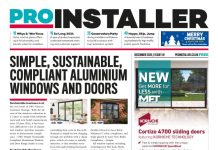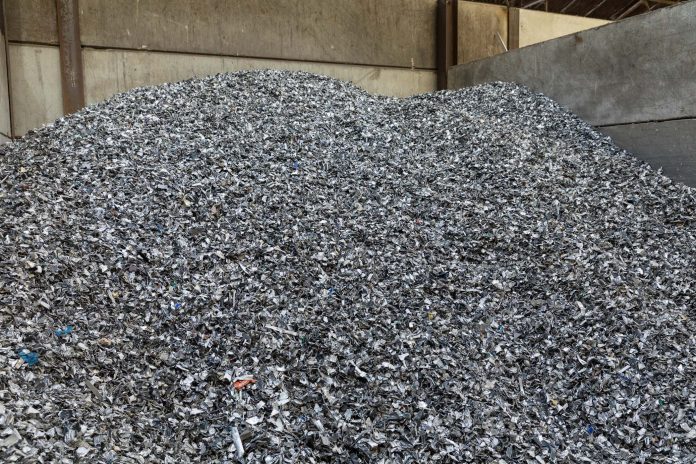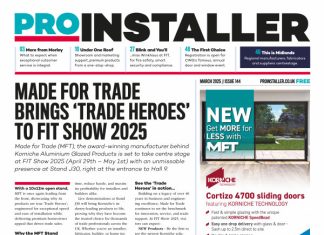by Phil Slinger – CAB Chief Executive
Aluminium has enjoyed an extensive recycling lifespan since its commercialisation in the 1880’s with the advent of the Hall–Héroult process, in fact, 75% of all the aluminium produced since this time is still in active use today. Aluminium has an enviable scrap value and ‘clean’ scrap can cost almost the same as new ‘prime’ aluminium. The industry demand for recycled aluminium is driven by the demand for low-carbon aluminium, as recycling aluminium uses just 5% of the energy needed to produce ‘prime’ aluminium from mined bauxite.
Low-carbon aluminium produced into billet or logs, the raw material used in the extrusion press, can be produced to less than 3.0 tCO2e (Tonnes of CO2 equivalent) when 60% to 70% of recycled material is mixed with a low-carbon prime aluminium. As you would expect, there is a high demand for this billet which comes at a premium. In reality all new aluminium used globally, across all industries, on average contains by volume one third recycled aluminium. The difficulty in obtaining scrap is due to the aluminium product, be it in transport or construction, is still in active use due to extensive life expectancy. Some of the oldest installed aluminium windows, installed at the Bodleian Library in Oxford, are over 80 years old and still going strong.
Today we recycle a higher percentage of our scrap aluminium as extraction rates from deconstruction of our structures has increased to almost 100%, such is the value of the metal. In fact, many aluminium supply chains now see our cities as ‘urban mines’ for the future extraction and re-use of aluminium used in both construction and transport infrastructure.
What is new today is the ability to recycle aluminium back into their original ‘grades’. Pure aluminium is rarely used as it is normally formed into an aluminium alloy which contains other materials that give the alloy special characteristics. The typical alloying elements are copper, magnesium, manganese, silicon, tin, nickel and zinc. There are many globally recognised grades of aluminium alloy which are placed into a long list or ‘series’ of different characteristics which are used in various applications. For wrought aluminium used in the architectural aluminium extrusion process, we generally use an alloy grade 6063. The ability to recycle in a single grade is helped by using modern, handheld alloy analysers. These XRF (X-Ray Fluorescence) analysers perform a quick, non-destructive analysis of scrap so grades can be grouped together for recycling.
Keeping the grades segregated means that the scrap aluminium has a higher value to a reprocessor ensuring that former architectural installations can be collected and made back into windows, doors and curtain walls.
There are two recognised areas of scrap collection, pre-consumer and post-consumer. As its name suggests, pre-consumer scrap is offcuts and damaged material from manufacture, post-consumer scrap is aluminium collected from the building deconstruction process or where an existing building is being refurbished. The value of the scrap is based on how ‘clean’ it is, that is to say free from thermal breaks, screws, fittings, gaskets, etc. Modern scrap processes can clean any scrap aluminium into clean scrap by removing these unwanted materials. Whilst pre-consumer scrap can easily be collected and fed back into the aluminium supply chain, post-consumer scrap often lies outside the traditional aluminium fenestration supply chain and is more challenging to ensure it is recycled through the correct channels.

The Council for Aluminium in Building (CAB) have been pioneering a ‘closed-loop’ recycling initiative which encourages its members to recycle through the initiative to ensure that scrap aluminium remains in the UK and remains in the 6063 extrusion grade alloy. Any member of CAB can join the scheme for free and more information is available on the Association website. Whilst the scheme is currently voluntary, in Germany such schemes have become mandatory, such is the importance of forming closed-loop recycling. The Glass and Glazing Federation (GGF) have recently adopted the CAB initiative and are promoting the scheme to their own members.
CAB member Alutrade are an advanced scrap reprocessor who collect scrap from across the UK from the aluminium fenestration supply chain and from construction refurbishment and deconstruction sites. Together with CAB, the aim is to track more architectural aluminium scrap back into a single grade alloy.
In previous decades companies prided themselves in offering high quality prime aluminium products that contained little scrap, today the tables have turned and companies wish to use as much scrap as possible to promote reduced carbon content. With a higher rate of recycled content, finishing by anodising can be problematic and many systems companies would recommend powder coating as a preferred finish, however, recently this has also come into question.
The Qualicoat Association, the leading global specification for architectural powder coating, has recently completed an extensive study on the structure of recycled aluminium alloy suitable for extensive powder coating life expectancy. Known as ‘Qualicoat 3.0’ the association is beginning to licence aluminium processors and extruders that can demonstrate that their extrusion passes three surface parameters which will then further extend the life expectancy of the applied powder coating.
So there is much more to the aluminium recycling process than first meets the eye. CAB and its members continue to pioneer and lead such initiatives in the UK and is working closely with other bodies in the UK. Based at the picturesque Bonds’ Mill development in Stonehouse, CAB staff are always on hand during normal working hours to answer any membership, training or technical aluminium fenestration related questions. News and event information is regularly updated on the CAB website at www.c-a-b.org.uk and also in the Association monthly ezine ‘A Window Into Aluminium’ which is free to sign up to. If you are not a member of CAB and wish to learn more about membership, please contact Jessica Dean at the CAB offices by email jessica.dean@c-a-b.org.uk or telephone Jessica at the office on 01453 828851.












